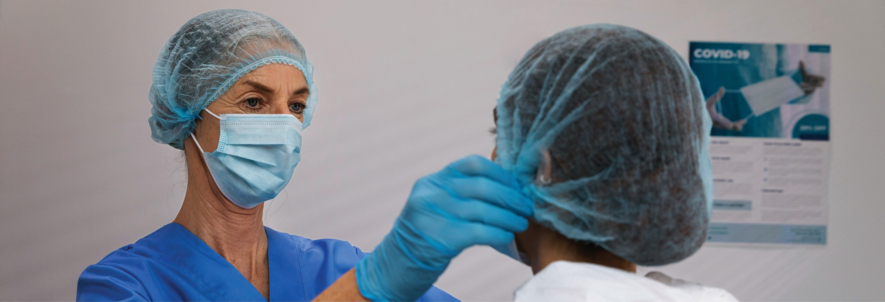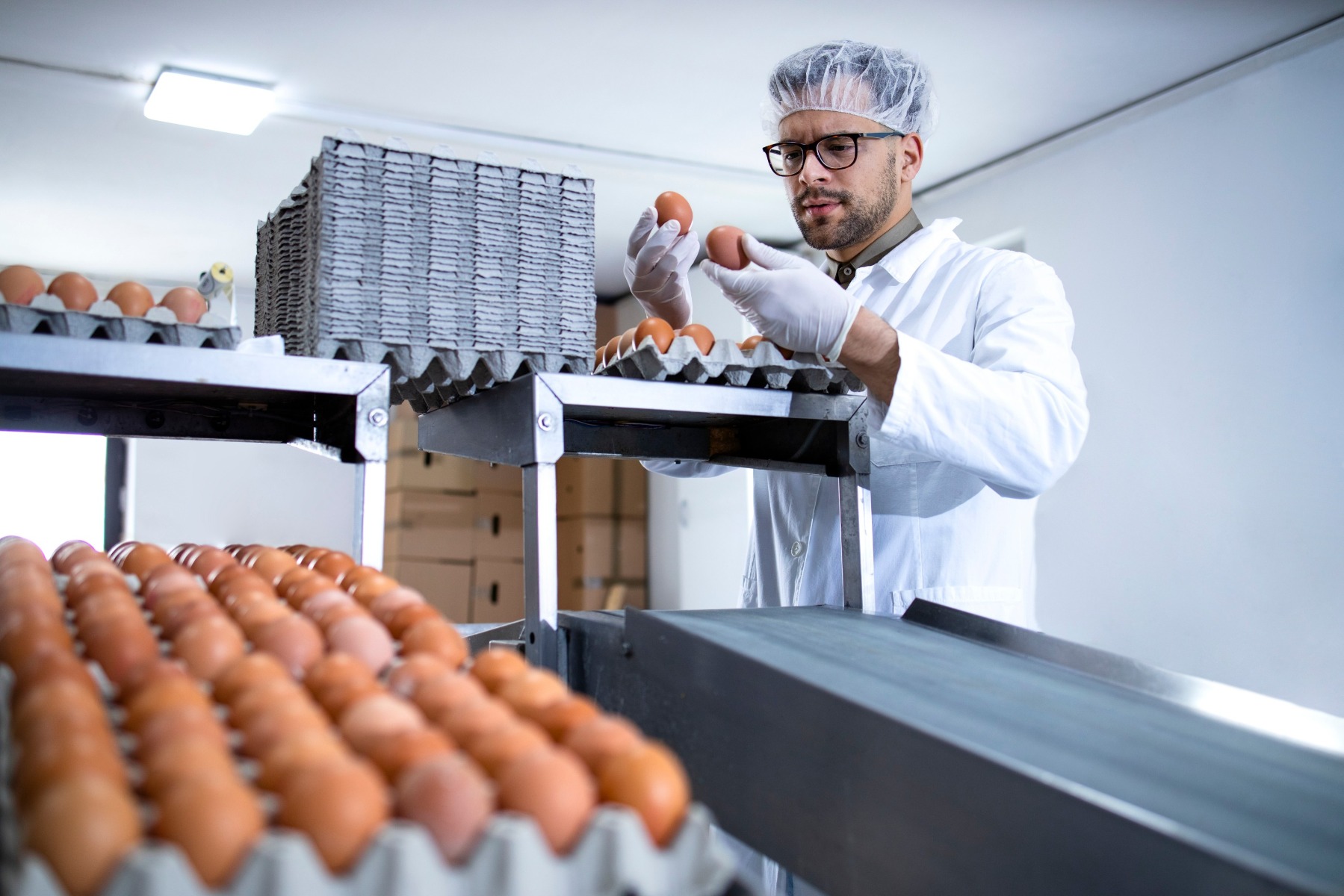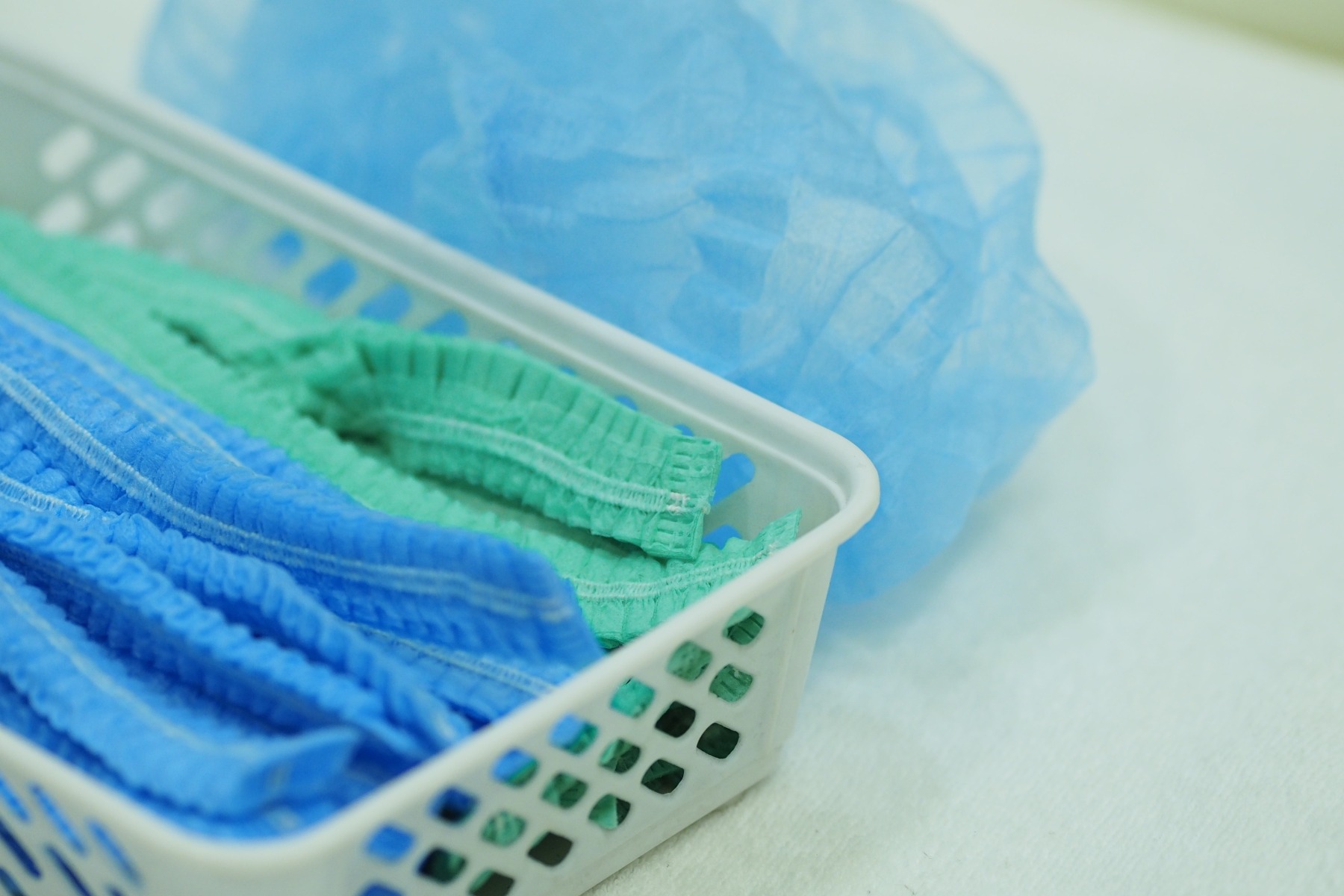
Bouffant caps, mob caps, hairnets, pleated bouffants, and flat bouffants—are they the same thing? The short answer is no. While these garments all serve the same purpose of restraining hair, they are commonly confused.
However, there are several key differences that can better equip your team or keep your products safer from contamination. This article outlines the key differences between each type of hair restraint, the materials they are made of, and what applications they are best suited for. Let’s learn how to choose the proper hair restraints for your business.
What do these hair restraints have in common?
- Disposable and light weight
- Made for sterile, clean, or hygienic work environments
- Decrease or eliminate cross-contamination of products or people
- Keep hair out of workers eyes and faces
- Designed to cover the hair and secure it
- Help with compliance and/or regulatory standards
What industries require hair restraints?
When you first think of a bouffant cap or hairnet, you likely think of the foodservice industry. However, there are numerous industries that also require hair restraints to protect the integrity of their products or the health of their patients.
Healthcare
Hospitals and healthcare clinics rely on hair restraints to help keep hair out of wounds to prevent infection. When treating a wound or operating on a patient, surgeons and nurses wear hair restraints for the safety of their patients.
Pharmaceutical
Pharmaceutical manufacturing workers use hair restraints to prevent hair from entering pill bottles, solutions, or other mixtures used to create drugs. You’ve likely never found a hair in your prescription or over-the-counter medications, and that’s because this industry must follow strict protocols to prevent contamination. Not only is it dangerous to the consumer, but it can also cause costly recalls and factory shutdowns.

Food Packaging and Food processing
Much like the pharmaceutical industry, the food packaging and processing industries also require hair restraints to prevent food contamination, recalls, and factory shutdowns. Food assembly line workers, packagers, inspectors, and manufacturers all wear hair restraints to keep productivity high and contamination low.

Food Service
The last thing anyone wants is to find hair in their freshly cooked meal. In the foodservice industry, hair is one of the top contamination risks. Cooks, caterers, and most restaurant workers wear hair restraints to prevent hair from falling into food that will be self-served (buffet) or served by staff.
Cleanrooms
Cleanrooms are sterile environments where even the air is filtered to keep cleanliness as high as possible. Any speck of dust, airborne particulates, and especially hair can completely ruin a product or process. This not only wastes time, but also raw materials, and ultimately money.
Semiconductor Fabrication / Electronics Manufacturing
This industry often works with micro products that have features far smaller than a dust particle. A human hair, or even a single speck of dust, can cause product defects rendering the product unusable. Hair restraints, on top of other control measures, help decrease the risk of product contamination and product defects.

The differences between hair restraints
Hairnets
When you first think of a hairnet, the classic “lunch lady” may come to mind and you’re not wrong. Hairnets are made of nylon, or polyester mesh and they mat down the user’s hair. Nylon hairnets are typically not as noticeable, however, if you look closely, you will notice they look like a web. This webbing or “honeycomb design” leaves openings where hair can escape.
This is not the cleanest option for industries such as pharmaceutical, cleanroom, semiconductor fabrication, healthcare, food packaging, or food processing. Hair nets are the least protective option against contamination; however, they are typically the least expensive.
Bouffants (Pleated vs. Flat)
Bouffant caps come in two styles—pleated and non-pleated (also called flat). Unlike hairnets, bouffant caps are made of fabric that does not have large openings known as “apertures”. This fabric creates a protective layer that doesn’t allow hair to escape. They are usually bright in color to help with compliance checks and/or “color coding” for assembly lines.

Pleated bouffants
- Often called "mob caps"
- Made with either single or double elastic for a more secure fit
- Typically, easier to grab just one in a bulk pack
- "Accordion" design or pleats allow for wearers to open them up to put them on
- Expands to fit a wider range of hairstyles, hair lengths, and hair types
- Made by a machine, meaning they are less likely to have human error
Flat bouffants
- Handmade
- More standard in the US market, but they are also more expensive because they are sewn by hand
- Come flat without pleats; you don’t “pull them open” to put them on
- Not as secure of a fit
- Typically considered more comfortable than pleated bouffant caps
Common Hair Restraint Materials
Nylon— Nylon is a synthetic fiber that is melted and molded to create hairnets, fabrics, tubing, rope, toothbrush, and more. In this case, hairnets are made of fine to heavy nylon filaments. Although nylon has a high heat, chemical, and wear resistance, it is the least protective hair restraint option due to the large openings.
Polypropylene— Spunbond polypropylene consists of bonded fibers that form a single, breathable fabric layer. Polypropylene bouffant caps are commonly worn in settings that include healthcare, medical research, pharmaceutical, dental, janitorial, and foodservice. They are ideal for applications that require light liquid spray and particulate protection.
SMS— SMS consists of three layers: Spunbond polypropylene, Meltblown polypropylene, Spunbond polypropylene. This three-layer fabric is durable and liquid-resistant, making it ideal for extended wear. SMS bouffants provide low to moderate liquid and particulate protection. They are commonly worn in healthcare, research labs, cleanrooms, food service, pharmaceuticals, electronics manufacturing, and surgical centers.
International Enviroguard’s SMS and Polypropylene Bouffant Caps
To protect your products, processes, and medical patients, we offer a variety of polypropylene and SMS bouffant caps. Below are our current size and style options:
Polypropylene (Blue and White, Pleated and Flat)
- Flat White: 19-inch, 21-inch, 24-inch
- Pleated White: 21-inch, 24-inch, 24-inch (latex-free), 28-inch
- Flat Blue: 21-inch, 24-inch
- Pleated Blue: 21-inch, 24-inch
SMS (Pleated White only)
- 21-inch and 24-inch white pleated bouffant
Related products
- Beard nets or "beard covers"; white only
- Face and head covers or "Ninja Hoods"; blue or white